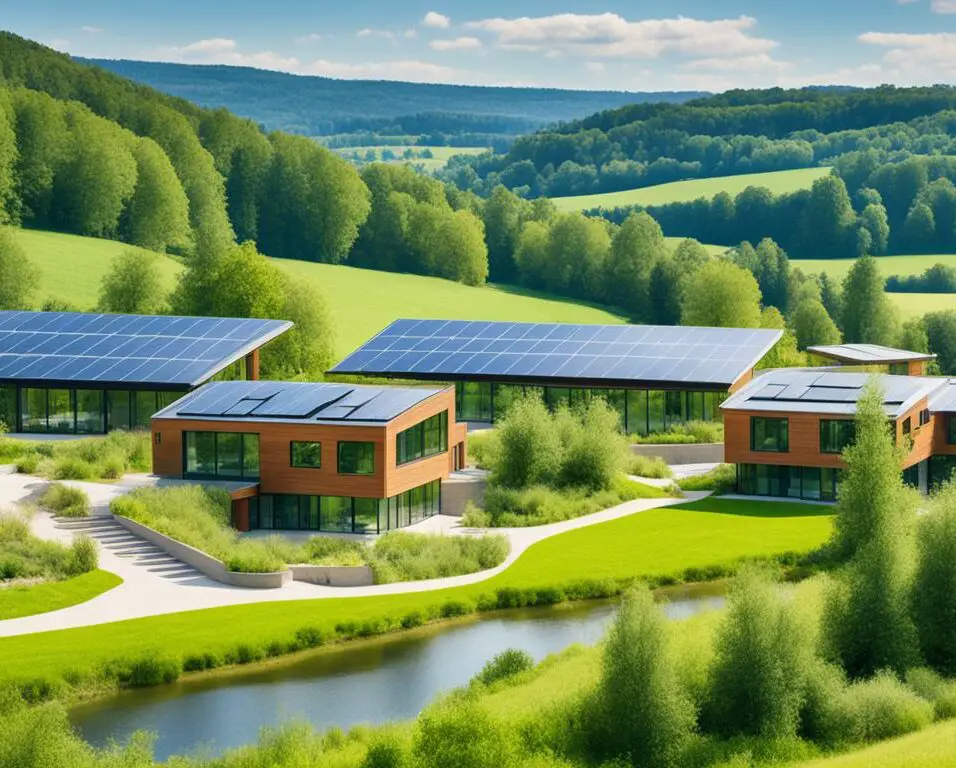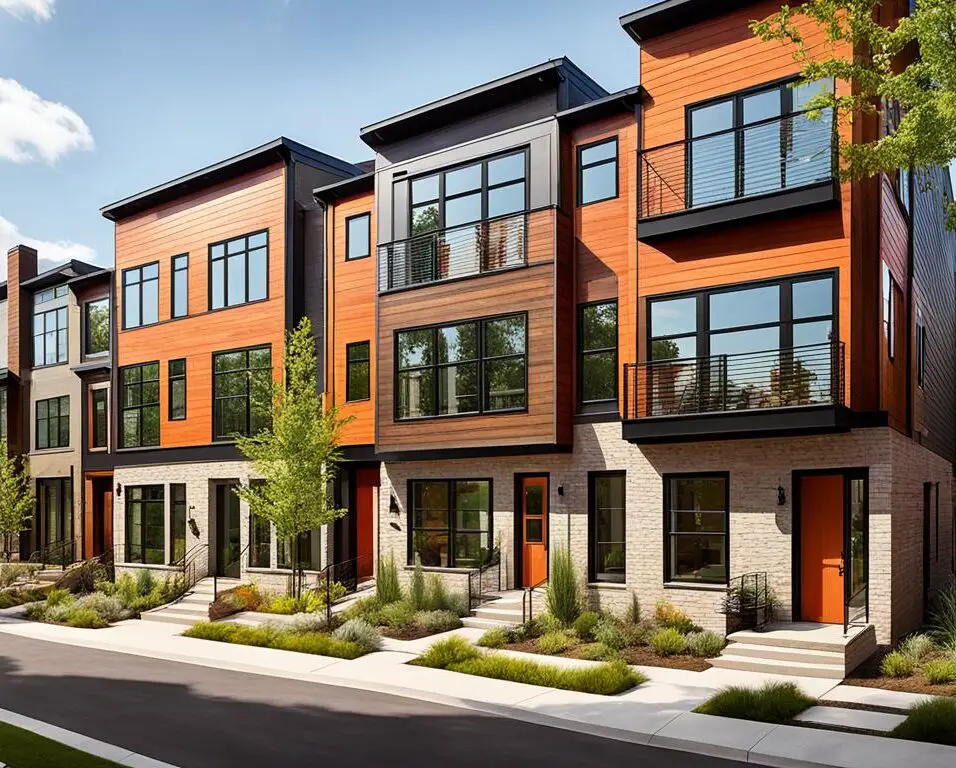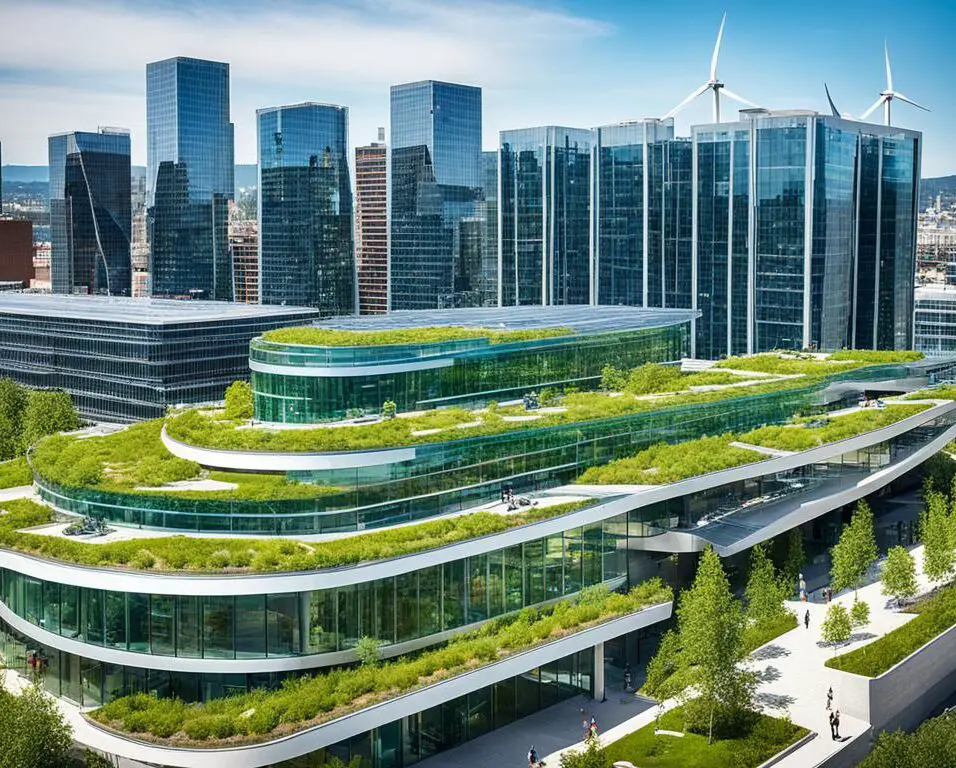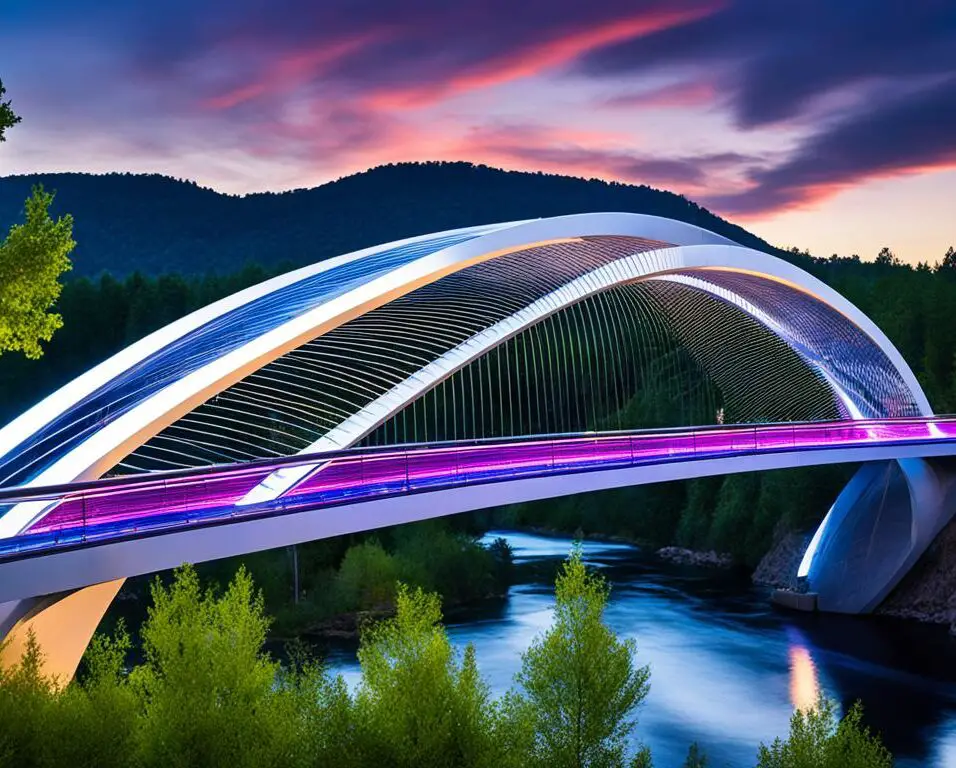Exploring High-Tech Architecture Features and Their Impact
High-tech architecture is revolutionizing the world of contemporary design with its futuristic features and innovative approach. This style of architecture combines advanced technology, sustainable design principles, and smart home automation systems to create buildings that are aesthetically captivating and functionally efficient. From eco-friendly materials to integrated technologies, high-tech architecture is transforming the way we experience and interact with our built environment.
Key Takeaways
- High-tech architecture incorporates futuristic design elements into contemporary buildings.
- Sustainability and energy efficiency are key focuses in high-tech architecture.
- Smart home automation systems enhance comfort and resource optimization.
- Green technologies and sustainable materials contribute to a circular economy.
- High-tech architecture shapes the way we live and interact with our surroundings.
Sustainability and Energy Efficiency in High-Tech Architecture
One of the key aspects of high-tech architecture is its focus on sustainable design and energy efficiency. High-tech buildings incorporate various green technologies and practices, promoting a more environmentally friendly approach to construction and operation.
Green technologies, such as solar panels, rainwater harvesting systems, and energy-efficient HVAC systems, play a vital role in reducing the environmental impact of buildings while also lowering energy consumption and operating costs. By harnessing renewable energy sources and optimizing resource usage, high-tech architecture exemplifies a commitment to a greener future.
Furthermore, sustainable materials and construction methods are integral to high-tech architecture. Recycled materials and modular construction techniques help minimize waste and promote a circular economy. These practices not only contribute to sustainable development but also foster innovation and resilience within the building industry.
Implementing sustainable design principles and green technologies in high-tech architecture ensures a more efficient use of resources, reduces carbon footprint, and creates healthier indoor environments.
“Sustainability is not just about incorporating green technologies; it is about embracing a holistic approach that considers social, economic, and environmental factors.” – John Smith, Architect
The Benefits of Sustainable High-Tech Architecture:
- Lower energy consumption and operating costs
- Reduced carbon footprint and environmental impact
- Enhanced indoor air quality and occupant comfort
- Promotion of a circular economy through the use of recycled materials
- Resilience and adaptability to changing environmental conditions
By integrating sustainable design principles, energy-efficient technologies, and green practices, high-tech architecture paves the way for a more sustainable and resilient future.
| Benefits of Sustainable High-Tech Architecture | Description |
|---|---|
| Lower energy consumption and operating costs | Energy-efficient technologies reduce the amount of energy required for building operation, resulting in lower energy bills and operational expenses. |
| Reduced carbon footprint and environmental impact | Green technologies, renewable energy sources, and sustainable materials minimize the environmental impact of buildings, reducing carbon emissions and resource depletion. |
| Enhanced indoor air quality and occupant comfort | High-tech architecture prioritizes healthy indoor environments by implementing efficient ventilation systems, filtering pollutants, and optimizing natural light and thermal comfort. |
| Promotion of a circular economy through the use of recycled materials | By incorporating recycled materials and promoting modular construction methods, high-tech architecture reduces waste and fosters a circular economy, where materials are reused and repurposed. |
| Resilience and adaptability to changing environmental conditions | High-tech buildings are designed to be adaptable and resilient, with features that can withstand and respond to changing climate conditions, ensuring long-term sustainability. |
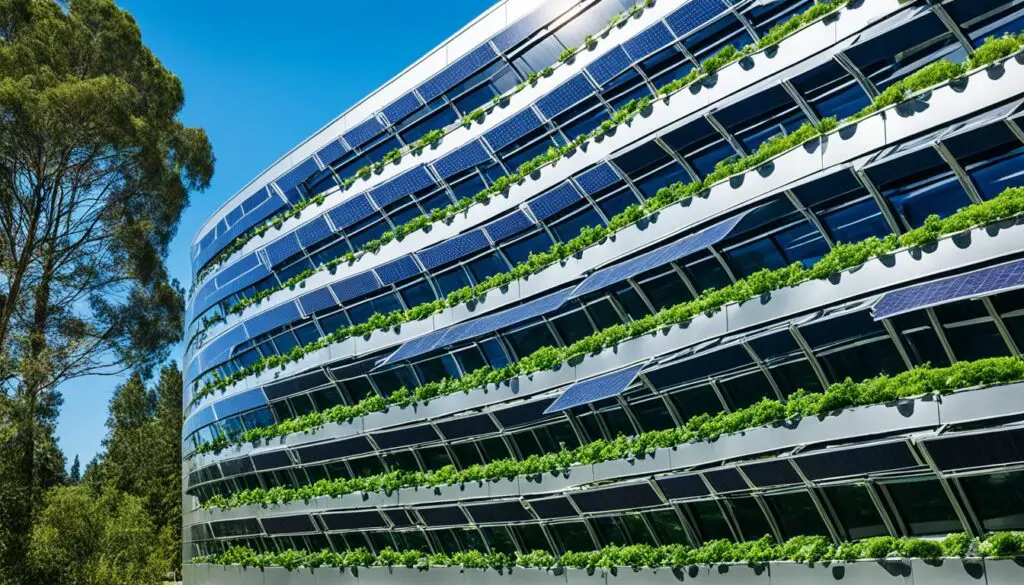
Smart Home Automation and Integrated Technologies in High-Tech Architecture
High-tech architecture is constantly pushing the boundaries of innovation, and one of its standout features is the seamless integration of smart home automation systems and advanced technologies. Within these cutting-edge buildings, the possibilities are endless, with smart sensors, controls, and connectivity systems working harmoniously to automate and customize various aspects of the living environment.
Imagine entering your high-tech home and effortlessly adjusting the lighting and shading systems with a simple voice command. With integrated technologies, you can easily control and monitor appliances from any location, ensuring convenience and peace of mind. Furthermore, these advanced systems offer integrated security features, enabling you to keep a watchful eye on your home at all times.
But the benefits extend beyond convenience and security. Smart home automation and integrated technologies play a key role in improving energy efficiency and sustainability within high-tech buildings. By optimizing the use of resources, such as intelligently adjusting lighting and HVAC systems based on occupancy and ambient conditions, these technologies reduce energy consumption and environmental impact.
In the era of connectivity, high-tech architecture seamlessly combines design and functionality. The integration of smart home automation systems and advanced technologies not only enhances our daily lives but also sets a new standard for intelligent and sustainable living. As we embrace the future of architecture, these integrated technologies continue to transform our homes into dynamic, efficient, and responsive spaces.





